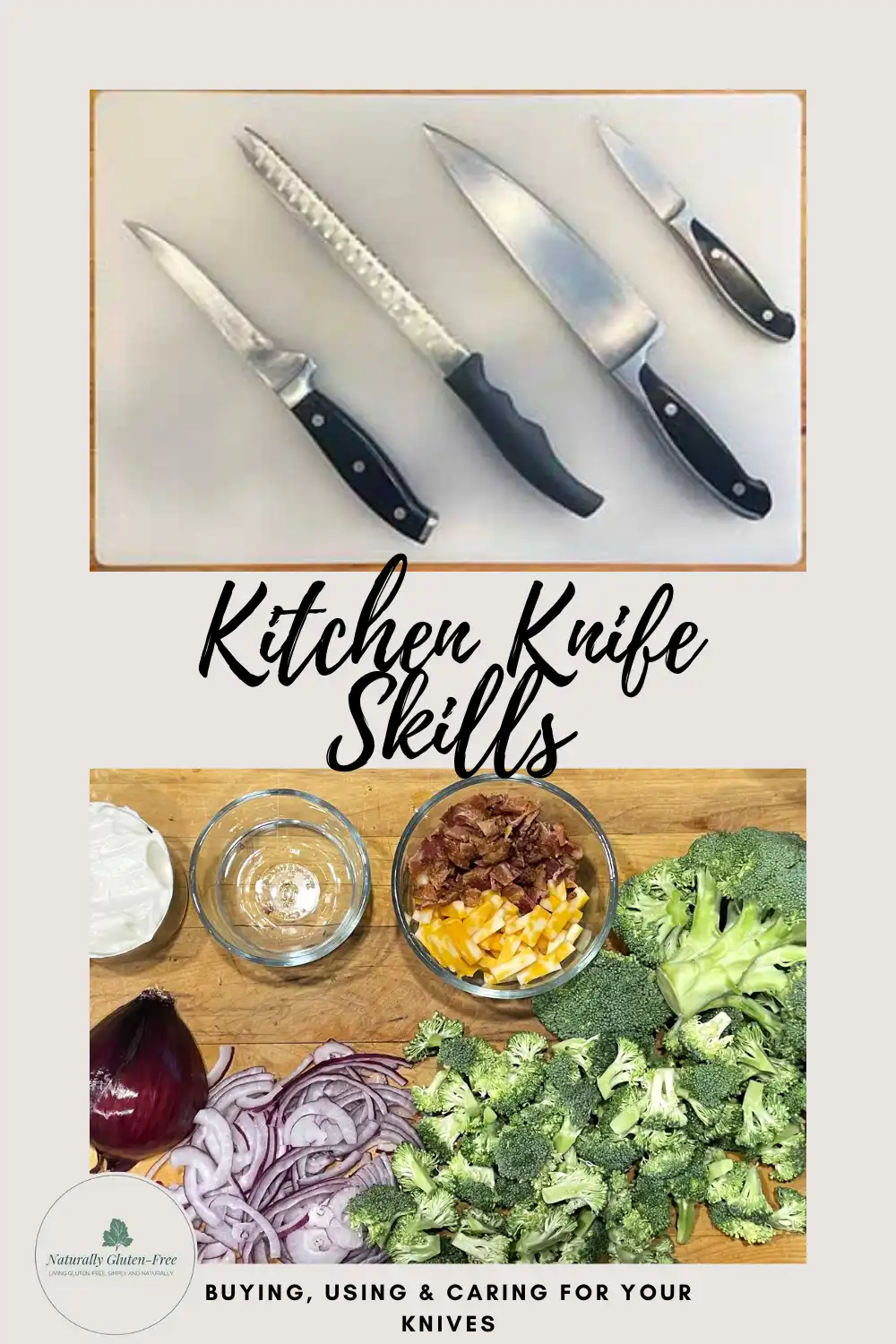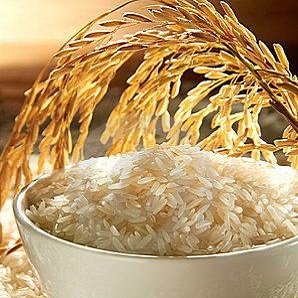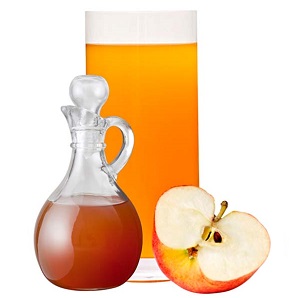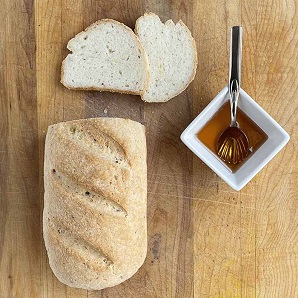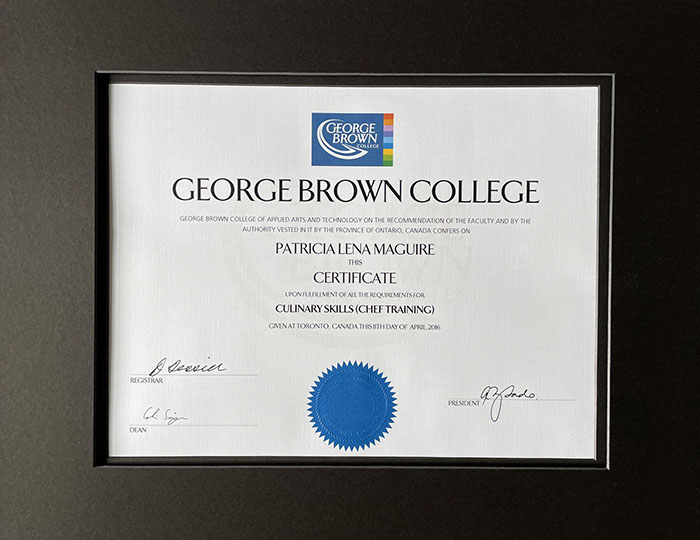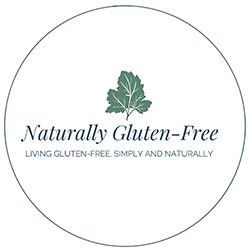- Home
- Gluten Free Cooking
- Kitchen Knife Skills
Master Kitchen Knife Skills: Buying, Using & Caring for Your Knives
Do you wish you enjoyed cooking more?
Having a quality set of knives and knowing how to use and care for them makes cooking easier and more enjoyable.
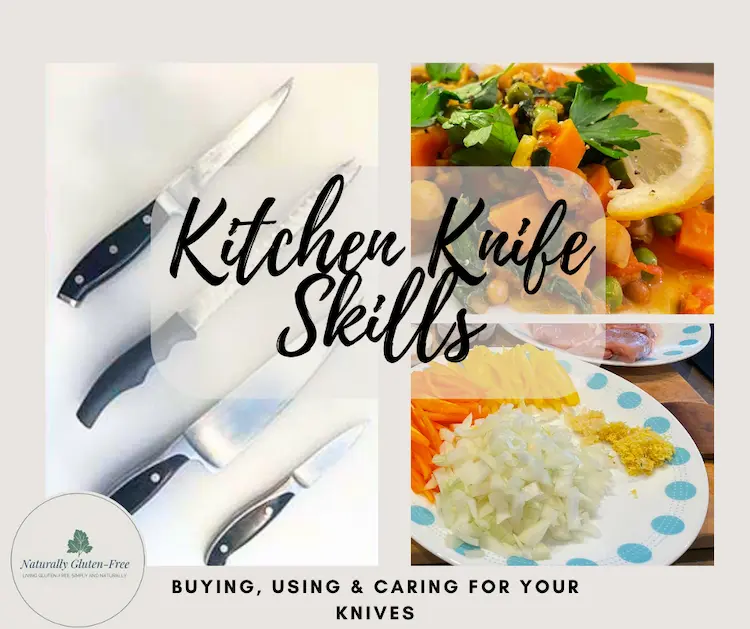
Contents:
How to Make Cooking Easier and More Enjoyable
Essential Kitchen Knives Every Home Cook Should Have
How to Buy Good Quality Knives Without Breaking the Bank
How to Hold a Chef's Knife for Better Control
Cutting Techniques to Improve Your Cooking and Your Confidence
How to Make Cooking Easier and More Enjoyable
I used to dislike cooking. When I look back, I think the reason was that I didn't feel confident in the kitchen.
An important step on the road to confidence, is having the right tools and the skills to use them.
In this guide to kitchen knife skills, you'll learn:
- the essential knives for a home cook
- how to choose a good set of knives
- how to care for your knives
- how to pick the right knife for each job
- expert tips on slicing dicing and chopping
Master these skills and you may find getting the meal on the table is a pleasure instead of a dreaded chore.
Essential Kitchen Knives Every Home Cook Should Have
While professional chefs may have a wide variety of knives, a home cook only needs a few, good quality knives. These four knives should accomplish every cutting task in your kitchen.
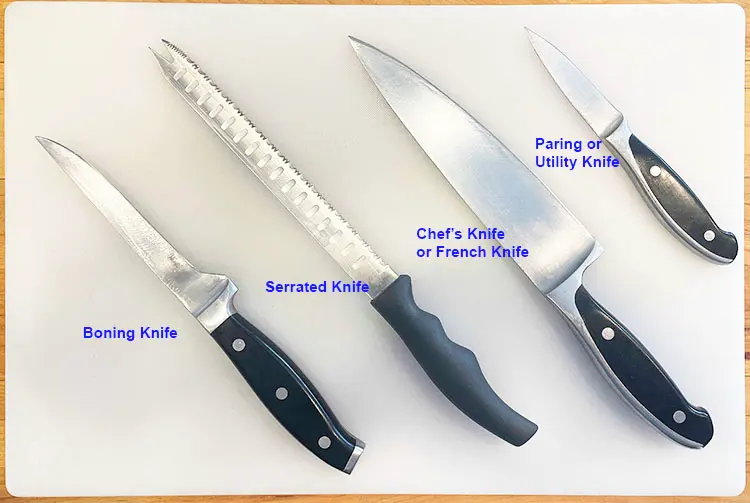
Paring or Utility Knife: This short versatile knife fits well in your hand and is easy to maneuver. It’s used for peeling and trimming fruits and vegetables. Use the point for for digging out blemishes. It works well for slicing small or sticky items like cheese that might cling to the blade of a larger knife.
Chef's Knife or French Knife: You’ll use this knife most of the time so it must be of good quality and fit comfortably in your hand. It’s for chopping, slicing, dicing, and mincing.
Serrated Knife: It’s notched like a saw and is ideal for cutting bread, tomatoes, and other foods with a crust or skin.
Boning Knife or Filet Knife: Use this knife for cutting meat away from the bones in fish, red meat or poultry. It’s thin and easy to maneuver around corners and has a notch near the handle for breaking through tough joints.
How to Buy Good Quality Knives Without Breaking the Bank
It can be overwhelming can't it. You're in the kitchen section of the store looking at all the different knives and wondering what to buy.
Do you need the most expensive set? No, but you do need to understand the key components of a good quality knife.
Parts of a Kitchen Knife
It's important to understand the parts of a kitchen knife so you know what to look for.
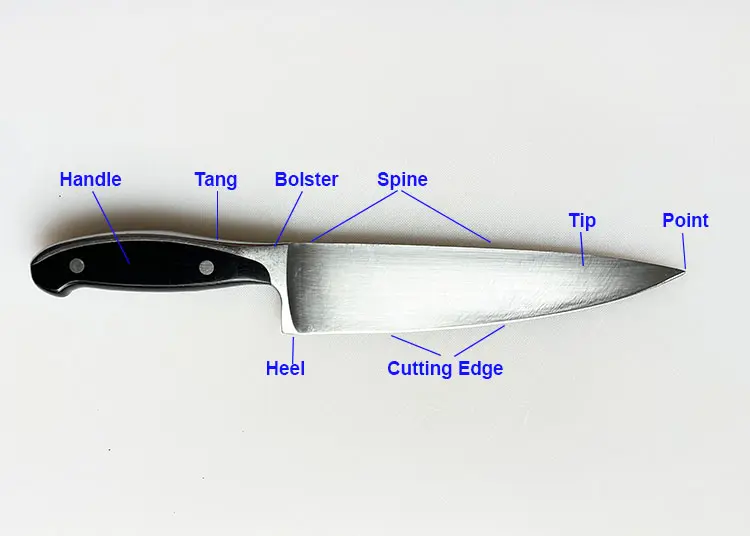
At first glance you'll see two main parts of the knife, the blade and the handle. But there is more:
- The tang is the part of the blade that extends into the handle. A good quality knife has a “full tang” meaning that it goes all the way to the butt of the handle.
- The blade should be solid and firm. A little bit of flex is fine but you don’t want the knife to bend when you’re cutting.
- The bolster is the section at the end of the blade where it attaches to the handle. It provides stability and finger protection. As a novice, it's a good idea to choose a knife with a thick, solid bolster.
- The heel is the part of the knife farthest from the tip. It's for thick, course cuts requiring more pressure.
- The spine is the top edge of the blade. It provides strength and stability and a safe surface for your hand if extra pressure is needed.
- The tip is the front section of the knife where it narrows toward the point. It's for fine delicate cuts.
- The point is for very delicate cuts and for piercing holes in an item.
How to Choose the Right Knife For You
Let's focus on the chef's knife as it's the one you'll use most. Your chef's knife should:
- be strong and stable with minimal flexibility in the blade
- have a full tang
- fit comfortably in your hand so it won't slip and your knuckles won't hit the cutting board when chopping
- be the right length for your comfort and skill
Chef's knives come in 8, 10 and 12 inch lengths. A shorter knife is easier to maneuver while a longer knife provides more cutting surface.
I have an 8 inch and a 10 inch chef's knife. I use the 8 inch one most.
Looking to buy a good starter knife set? This Three-piece Henkel Set from Amazon includes an 8-inch chef's knife, a serrated, knife and paring knife. These are high quality knives that will serve you well for years.
If you decide to buy I may earn a small commission at no extra charge to you.
Pin for Later
Best Cooking Knife Brands
German and Japanese manufactured knives are common in both professional and home kitchens. What's the difference, and how do you choose?
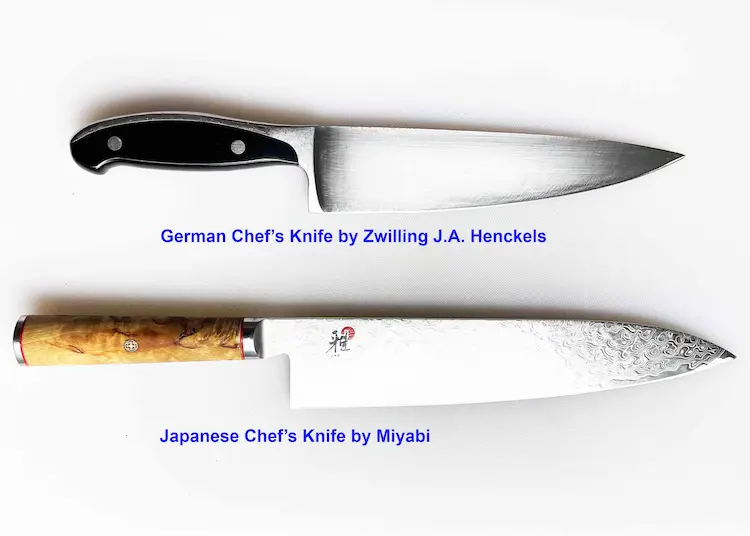
German Knives
German knives are heavy and robust making them a good choice for a novice or expert cook.
They stand up to repeated sharpening and will last a long time.
Some chefs find them a little heavy. This can lead to fatigue when using all day, but shouldn’t be an issue for a home cook.
Popular brands are Wusthof, Henckel , and Le Creuset.
Japanese Knives
Japanese knives are lighter and thinner allowing for a razor thin edge and very precise cuts. Think sushi.
The downside is they are more delicate and can be damaged easily if not well cared for.
Popular brands are Miyabi, Kasumi, Shun, Global, and Mac.
How to Hold a Chef's Knife for Better Control
Holding your knife properly will improve efficiency and safety. Follow these steps:
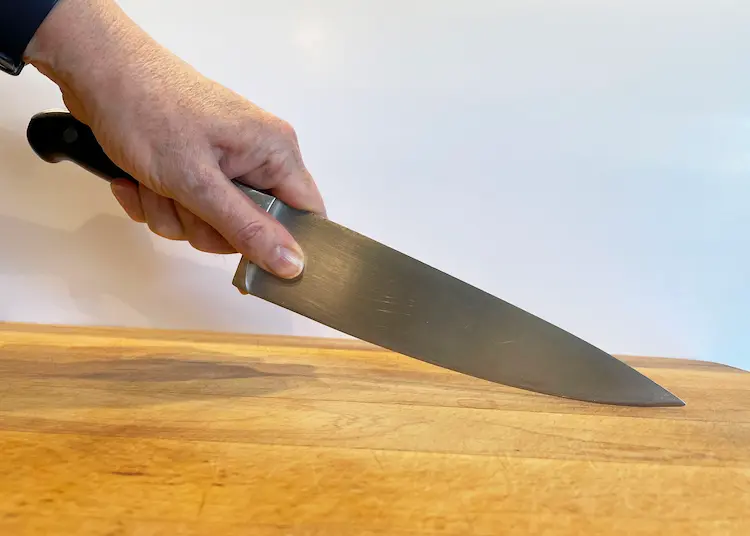
- Choke up on the blade with your index finger tucked back toward your wrist. Make sure your finger doesn’t get under the blade.
- Your thumb should extend along the blade parallel to the cutting surface.
- Your back three fingers should grip the handle.
Cutting Techniques to Improve Your Cooking and Your Confidence
I taught my husband these simple kitchen knife skills and his golf buddies were so impressed when he made dinner on their Florida golf trip. Follow these steps to impress yourself and your friends:
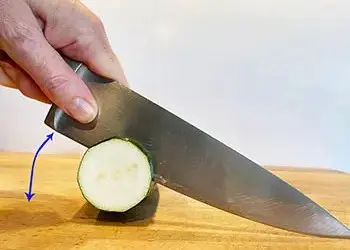
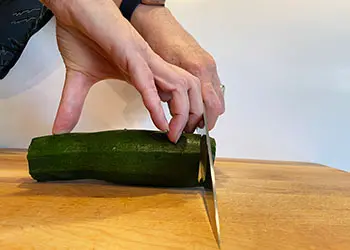
- Stand square to your work surface and hold the knife as described above.
- Place the point of the knife on the cutting surface then rock the knife toward the heel. Repeat without lifting the point.
- The opposite hand holds the food with fingers in a claw-like position, finger tips tucked back out of the way.
- Use the flat edge of the front knuckle as a guide and move your hand back as you slice.
Knife Sharpening and Maintenance
If you take good care of your knives they will last a long time and improve safety and efficiency in your kitchen. Here's how:
- Hone your knife with a honing steel every time you use it.
- Sharpen your knives with a whet stone or have them professionally sharpened twice a year.
- Hand wash your knives immediately after use. The dishwasher may damage them.
- Store your knives safely in a knife block, magnetic strip or use a blade guard.
A dull knife is more dangerous than a sharp one as it's likely to slip. Keep your knives sharp and well maintained.
Honing vs Sharpening
That honing steel that came with your knife set is not a sharpener. It will not sharpen a dull knife.
- The honing steel is for honing the blade of an already sharp knife.
- Hone your blade before each use to improve its performance and help it to last longer between sharpening.
How to hone (or steel) your knife.
Knowing how to hone your knife is an important knife skill. Follow these simple steps:
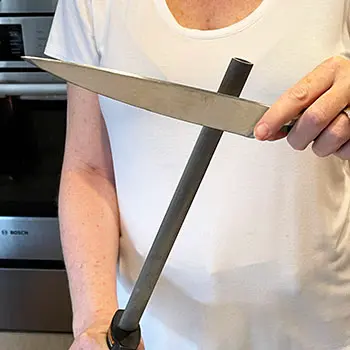
- Hold the steel in your left hand (if you are right handed) with your elbow tight to your side and the steel pointing straight up.
- Place the heel of your knife at the top of the steel with the blade at a slight angle - about 20°.
- Move the blade along the steel by flicking your wrist downward.
- Move the knife to the other side of the steel and repeat.
- Do this several times on each side
Knife Sharpening Tools
You can buy various tools for sharpening knives.
There are little rollers or "V" shaped tools that you pass the blade through that will grind both sides of the blade. I don’t recommend these as they don’t do a great job and could end up ruining your knife.
FAQs: Common Kitchen Knife Questions
Q: What are the essential knives every home cook should have?
A: A chef’s knife, paring knife, and serrated bread knife are the three must-haves for any kitchen.
Q: How do I properly hold a chef’s knife?
A: Grip the handle firmly and place your thumb and index finger on the blade for better control.
Q:. What’s the difference between a boning knife and a paring knife?
A boning knife is long and thin for cutting around bones, while a paring knife is short and ideal for peeling and small cutting tasks.
Q: How often should I sharpen my kitchen knives?
A: Home cooks should sharpen their knives every 6-12 months and hone them before each use.
Q: What’s the best way to clean and store kitchen knives?
Wash knives by hand immediately after use, dry them thoroughly, and store them in a knife block or on a magnetic strip to prevent dulling.
Home > Gluten-Free Cooking > Knife Skills
